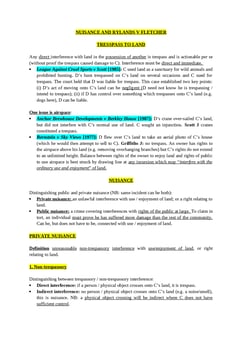Byrne v Deane [1937] 1 KB 818; [1937] 2 All ER 204
Judgement for the case Byrne v Deane
Table Of Contents
KEY POINTS
This case arose from a controversy around the owners' failure to promptly remove a specific notice despite its potentially damaging contents. The notice hinted at reporting certain wrongful acts to the police, raising questions about the veracity of the claims and the motives behind the message.
Central to the legal debate was determining whether the words used in the notice could convey a defamatory meaning, and thereby posed a potential threat to the reputation of the individuals implicated.
The failure of the club owners to take down the notice added an additional layer to the situation, as it raised the issue of whether their inaction could be construed as a form of publishing the alleged libel.
The legal implications surrounding this incident bring into focus the delicate balance between free speech rights and the responsibility to protect individuals from false and damaging statements.
FACTS
-
Edmund Joseph Byrne ("Plaintiff") had been a member of Seaford Head Golf Club ("Golf club") with Robert Heward Deane and his wife Aletta Felicia Deane ("Two Defendants) serving as proprietors, and the female Defendant also held the position of secretary.
One of the club rules explicitly stated that no notice or placard could be posted on the club premises without the secretary's consent.
The Defendants had maintained automatic gambling machines on the club premises for the use of its members.
Someone reported the presence of these machines to the police, resulting in their removal from the club premises.
-
On the day following the removal of the machines, an individual affixed a typewritten paper to the club's wall containing a verse that expressed disdain for the informant.
The verse implied that the informant, referred to as "he who gave the game away," deserved severe consequences.
-
Feeling targeted by the verse, the Plaintiff initiated a libel action against the two Defendants.
Plaintiff alleged that the Defendants had published the words in the notice, asserting that they were directed at him and insinuated that he had reported the existence of the machines to the police, accusing him of underhand disloyalty to the club members.
-
In the legal proceedings, Hilbery J. determined that the words in the notice were indeed defamatory of the Plaintiff.
Moreover, as the Defendants had complete control over the club's walls and could remove the offending paper after becoming aware of its content, the publication was deemed to have occurred with their approval.
Hilbery J. awarded the Plaintiff nominal damages.
The Defendants subsequently appealed the decision.
JUDGEMENT
-
In the judgment, Slesser and Greene L.JJ., disagreeing with Greer L.J., overturned Hilbery J.'s decision.
They concluded the words were not defamatory, stating that initiating crime-suppression machinery couldn't be inherently defamatory.
The judgment hinged on interpreting the words' defamatory nature and each Defendant's role in the publication.
Greer LJ
Dissented, considering the words defamatory and asserting that the Defendant's failure to remove the statement implicated them in its publication.
Slesser LJ
Noted no evidence of publication by the male Defendant, while Greene L.J. believed both Defendants were involved in publishing the libel.
COMMENTARY
The case involved issues related to defamation and publication. The judges discussed whether the question words were defamatory and whether there was evidence of publication by the defendants.
-
The judges delved into whether the words used in the alleged defamation were defamatory.
The focus was on the innuendo, and there was a discussion about the meaning attributed to the words by the learned judge.
The case highlighted the complexity of determining defamation and the nuances involved in interpreting the alleged defamatory statements.
-
One of the arguments revolved around whether reporting a criminal offense to the police, as implied in the alleged defamation, could be considered defamatory.
The judges discussed the nature of the crime and whether it warranted a negative perception.
The judges concluded that the question words were not capable of a defamatory meaning, and they allowed the appeal.
The case provided insight into the legal considerations surrounding defamation cases, the interpretation of language, and the criteria for determining whether a statement is defamatory.
For Further Study on Byrne v Deane
Need instant answers? Our AI exam tutor is here to help.
Ask questions 🙋 Get answers 📔 It's simple 👁️👄👁️
Our AI is educated by the highest scoring students across all subjects and schools. Join hundreds of your peers today.
Get StartedSimilar Cases
Related Product Samples
These product samples contain the same concepts we cover in this case.

 Since 2010, Oxbridge Notes has been a trusted education marketplace, supplying high-quality materials from top achievers at universities like Oxford, Cambridge, LSE, Harvard, and Yale.
Since 2010, Oxbridge Notes has been a trusted education marketplace, supplying high-quality materials from top achievers at universities like Oxford, Cambridge, LSE, Harvard, and Yale.